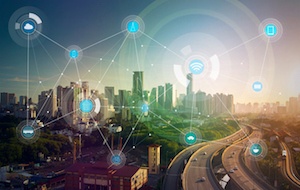Are You Ready for e-Discovery in the IoT Age?
 Today, attorneys face a new frontier in discovery — the so-called “Internet of Things” (IoT). This article discusses the implications for e-discovery as society becomes increasingly connected to the Internet. A sidebar showcases how the IoT has become part of our everyday lives, creating opportunities and risks for clients.
Today, attorneys face a new frontier in discovery — the so-called “Internet of Things” (IoT). This article discusses the implications for e-discovery as society becomes increasingly connected to the Internet. A sidebar showcases how the IoT has become part of our everyday lives, creating opportunities and risks for clients.
Connection to e-Discovery
The IoT generally refers to the connection of objects to the Internet for the purposes of gathering, sending and receiving data about us and our interactions with our environment. Easy access to Wi-Fi networks, mobile data and the cloud is rapidly spreading this interconnectedness. Many of us are already leaving a trail of digital footprints wherever we go, whether we know it or not.
It seems inevitable that courts will view the data generated by IoT as ripe for discovery if relevant and not privileged. Similar to social media evidence a decade ago, IoT data is voluminous and poised to take center stage in a variety of claims. IoT data has already debuted in court. In one reported case, attorneys for an injured plaintiff used her fitness tracker to show that her physical activity level had fallen dramatically after an automobile accident. IoT data also can be used in personal injury litigation to suggest that a plaintiff’s physical activities don’t match up with his or her disability claim — or that someone wasn’t in a place he or she claimed on a particular date and time.
The possibilities of using IoT data could seep into all types of cases. So, attorneys must take these data sources into consideration when crafting discovery plans, responding to production requests and developing overall case strategy.
Collecting and Preserving Data
The collection and preservation of IoT data comes with similar challenges as social media evidence. For example, when data is stored remotely in the cloud or on an enterprise server, who owns and controls it for purposes of a litigation hold: the company that manufactured the device that conveys the data, the company that stores it or the person whose data has been collected? The answer could be affected by whether the device is subject to a company’s bring-your-own-device policy and whether it’s used for both personal and professional purposes. With so many layers to wade through, securing access to data is rarely a simple matter.
Difficulties also can arise when it comes to locating relevant data. Forensic collection methods often lag behind the development of new technologies and may not yet be equipped to find data from a specific device. Moreover, IoT devices frequently aggregate individual data from multiple users in a structured database, further complicating the identification of relevant data.
The IoT gives attorneys and their clients much to think about regarding the collection, storage and securing of data. Beyond discovery, the IoT presents additional concerns, such as the risks of costly data breaches and privacy-related claims.
Considering Both Sides of the Coin
The IoT will likely bring great change to all stages of litigation, especially the discovery phase. For those who are informed and prepared to deal with this type of data, it presents great opportunities and threats that you can’t afford to overlook.
Sidebar: Wealth of Information at Our Fingertips
Is the Internet of Things (IoT) really revolutionizing our world? You might not realize it, but the IoT has already taken hold in homes and workplaces around the world.
One infiltration of the IoT in our everyday lives is the fitness tracker. Examples include Fitbits, smart watches or smartphone apps. At any given time, someone nearby is doubtless tracking his or her steps, heart rate, calories burned or sleep patterns.
But IoT applications go far beyond that. Cars can now collect information on driving habits for insurance companies. Thermostats, lights and household appliances can respond to real-time data — and they can be controlled remotely. Employers have even jumped on the IoT bandwagon, using sensors on company-owned vehicles and employees’ clothing to monitor their location and productivity. Such devices are expected to become increasingly common in the workplace, as they become less expensive, smaller and more accurate.
Attorneys who ignore the data gathered by this technology could be missing out on valuable evidence that could support their clients’ cases — or used against them if discovered by the opposing side.
© 2017








